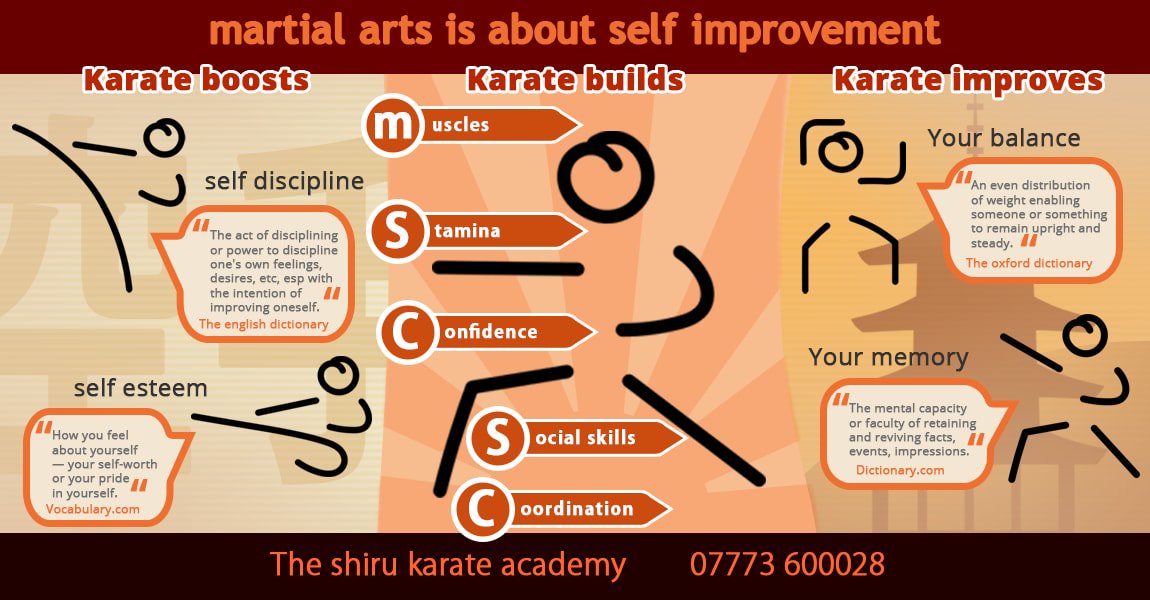The History And Evolution Of Martial Arts: From Its Ancient Roots To The Techniques Practiced Today
The History And Evolution Of Martial Arts: From Its Ancient Roots To The Techniques Practiced Today
Blog Article
Posted By-Clemons Clements
Enter the globe of martial arts, where ancient origins and contemporary strategies clash in an exhilarating trip of discipline and self-discovery.
As you look into the history and advancement of this captivating art type, prepare to be captivated by the cultural impacts, technological developments, and extensive philosophy that have formed it over centuries.
From the battlefields of old people to the training premises of today, martial arts have actually stood the test of time, continuously adjusting and growing.
Each strike, each activity, brings with it the weight of plenty of years of practice and knowledge, gave through generations. This is a story of durability, of warriors who sought not only physical prowess, yet also self-confidence and harmony.
Join us on this amazing expedition as we reveal the keys, the tales, and the transformational power of martial arts.
Prepare yourself to be motivated, challenged, and permanently transformed by the background and evolution of martial arts.
Social Influences on Martial Arts
As you explore the history and evolution of martial arts, you'll swiftly find the fascinating ways in which cultural influences have actually shaped these battle methods.
From the ancient human beings of China and India to the more current developments in Japan and Brazil, martial arts have actually been greatly influenced by the cultures in which they originated.
For example, Chinese martial arts, such as Kung Fu and Tai Chi, are deeply rooted in the approach of Taoism and the idea of Yin and Yang.
On the other hand, Japanese martial arts, like Martial arts and Judo, mirror the samurai warrior traditions and the values of discipline and honor.
In a similar way, Brazilian martial art, Capoeira, integrates components of African dancing and music, showing the cultural heritage of African servants in Brazil.
These social affects not just give each martial art its unique characteristics but additionally give a deeper understanding of the historical and social contexts in which they progressed.
Technological Innovations and Martial Arts
With the rise of sophisticated weaponry and ingenious training tools, you've been able to enhance your abilities and adjust to the ever-changing battle landscape.
Technological innovations have actually reinvented the way martial arts are exercised and educated. Virtual reality simulations now allow you to train in practical battle circumstances without the threat of physical damage. go to this web-site -speed electronic cameras record every relocation, enabling you to assess and excellent your strategies. Wearable gadgets check your heart rate, breathing, and muscle activation, offering instant comments on your efficiency.
Additionally, the advancement of specific devices, such as resistance bands and agility ladders, has allowed you to enhance your speed, strength, and agility. These technological innovations have not only made training much more effective but have actually additionally pushed the borders of what is feasible in martial arts, enabling you to get to new heights in your practice.
The Philosophy and Principles of Martial Arts
The ideology and concepts of martial arts are deeply rooted in shaping your attitude and instilling self-control, focus, and regard in your practice.
1. Way of thinking: Martial Arts shows you to develop a solid and resilient mindset. It enables you to overcome challenges both on and off the mat, pressing your limitations and persisting in the face of hardship.
2. Discipline: Martial Arts demands technique and self-control. Through routine training and adherence to stringent rules and strategies, you discover to regulate your impulses and establish a solid job values.
3. Emphasis: Martial Arts requires extreme focus and focus. By training your mind to be present in the minute, you boost your ability to react promptly and successfully throughout fight circumstances.
4. Regard: Martial Arts stresses regard for oneself, instructors, educating partners, and opponents. It shows you to value the abilities and experiences of others, cultivating a sense of camaraderie and gamesmanship.
Conclusion
Congratulations on completing your trip through the fascinating world of martial arts! Throughout go source , you have experienced the rich history and remarkable advancement of these combat practices.
From their old origins to the contemporary techniques we see today, martial arts have been shaped by cultural impacts.
The assimilation of innovation has also played a significant role in changing the method martial arts are educated and practiced in the here and now day.
Nevertheless, it is essential to bear in mind that martial arts are greater than simply physical fight. They incorporate extensive ideologies and leading principles that surpass the simple act of fighting.
Take a minute to reflect on this anachronistic adventure and value exactly how the heritage of martial arts continues to flourish in the present, transcending time and limits.
